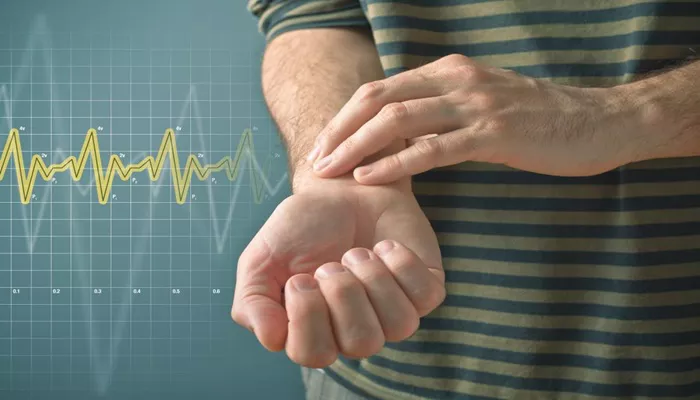Breath-holding is a common practice that many people engage in, whether during swimming, meditation, or simply as a challenge. However, the physiological effects of this action, particularly on the cardiovascular system, are complex and warrant a detailed examination. This article explores whether holding your breath can lower your heart rate, drawing on scientific studies and physiological principles.
Heart Rate And Breath-Holding
Heart Rate Basics
Heart rate (HR) is the number of times the heart beats per minute. It is influenced by various factors, including physical activity, emotional state, and respiratory patterns. The autonomic nervous system regulates heart rate through its two branches: the sympathetic nervous system (which increases heart rate) and the parasympathetic nervous system (which decreases it).
Physiological Response to Breath-Holding
When a person holds their breath, several physiological changes occur. Initially, there is an increase in carbon dioxide (CO2) levels in the blood and a decrease in oxygen (O2) levels. This triggers a series of responses aimed at preserving oxygen for vital organs, particularly the brain and heart.
Initial Heart Rate Changes During Breath-Holding
Research indicates that during the initial phase of breath-holding, heart rate typically increases. For example, a study found that healthy subjects experienced an increase in HR from resting levels upon starting to hold their breath. This initial rise is attributed to increased sympathetic nervous system activity as the body reacts to the stress of reduced oxygen availability.
SEE ALSO: How Long Does Afib Ablation Last?
The Role of Blood Pressure
As breath-holding continues, blood pressure tends to rise significantly. One study reported that systolic blood pressure could increase from around 133 mmHg to as high as 175 mmHg during breath-holding. This rise in blood pressure is often accompanied by a compensatory response from the body.
Heart Rate Decline Over Time
While initial heart rates may increase, some studies suggest that after a brief period, heart rate may begin to decrease slightly. For instance, another study indicated that after an initial increase in HR during breath-holding, there was a gradual decline over time. However, this decline does not typically reach levels significantly lower than resting heart rates.
Mechanisms Behind Heart Rate Changes
The changes in heart rate during breath-holding can be explained through several mechanisms:
Baroreceptor Reflex: As blood pressure rises due to increased vascular resistance from peripheral vasoconstriction, baroreceptors in the carotid arteries detect this change. In response, they signal the parasympathetic nervous system to reduce heart rate.
Hypoxia and Hypercapnia: As oxygen levels drop and carbon dioxide levels rise during prolonged breath-holding, these changes can lead to alterations in heart function. However, while hypoxia can stimulate increased sympathetic activity initially, prolonged hypoxia may lead to reduced cardiac output and lower HR.
Vagal Tone: The vagus nerve plays a crucial role in regulating heart rate. Increased vagal tone can lead to a decrease in HR after an initial increase during stress responses like breath-holding.
Long-Term Effects of Breath-Holding
Long-term or repeated breath-holding can lead to adaptations in cardiovascular function. Athletes who practice breath-holding techniques often exhibit improved tolerance to hypoxia and enhanced cardiovascular efficiency. These adaptations may include:
Increased Stroke Volume: Over time, regular breath-holding may enhance the heart’s ability to pump blood more efficiently.
Lower Resting Heart Rates: Individuals who train with breath-holding techniques often develop lower resting HRs due to improved cardiovascular fitness.
Clinical Implications
Understanding the relationship between breath-holding and heart rate has clinical significance:
Cardiovascular Health: Monitoring HR responses during breath-holding can provide insights into an individual’s cardiovascular health.
Training Techniques: Athletes may utilize controlled breath-holding as part of their training regimens to improve performance under hypoxic conditions.
Therapeutic Applications: Techniques such as the Valsalva maneuver—where one holds their breath while bearing down—can be used therapeutically to manage certain arrhythmias by influencing HR and blood pressure dynamics.
Conclusion
In summary, holding your breath does not straightforwardly lower your heart rate; rather, it initiates a complex interplay of physiological responses. Initially, heart rate tends to increase due to sympathetic activation and rising blood pressure. Over time, however, there may be a slight decrease in heart rate as parasympathetic activity increases in response to elevated blood pressure and changing gas levels.
Understanding these mechanisms provides valuable insights into how our bodies respond under stress and highlights the importance of controlled breathing techniques for both athletic performance and therapeutic applications. Further research is needed to explore individual variations in these responses and their implications for health and fitness.
Related topics:
- How Could A Fetal Arrhythmia Affect Fetal Oxygenation?
- Why Do I Get Arrhythmia After Eating?
- What Is Sinus Arrhythmia on An Ecg?

